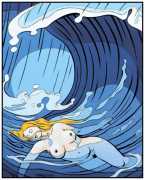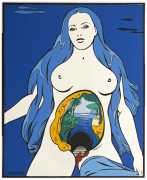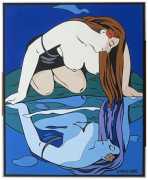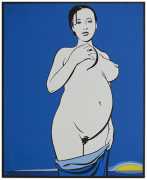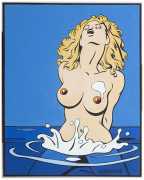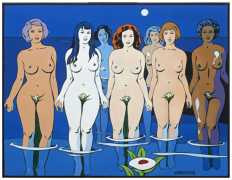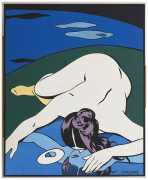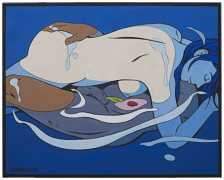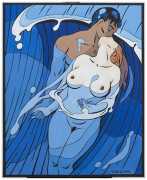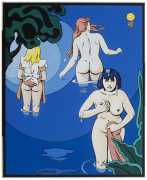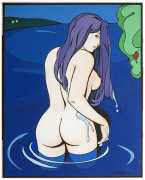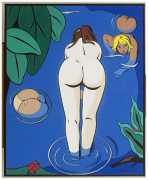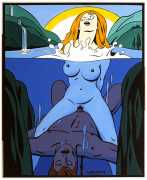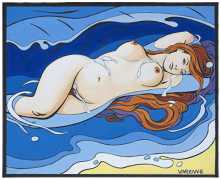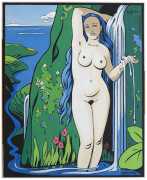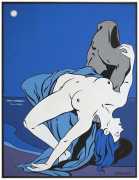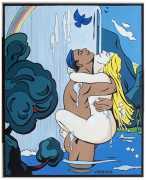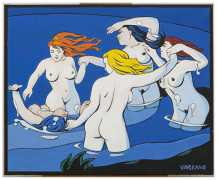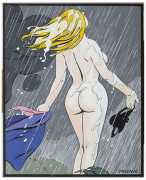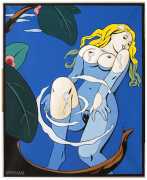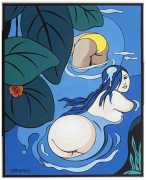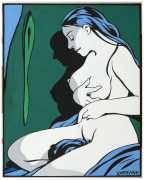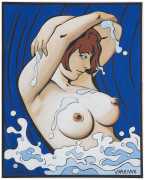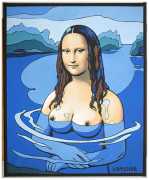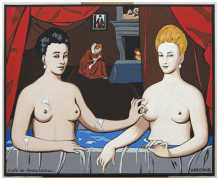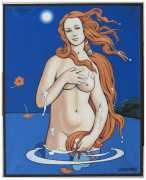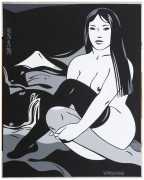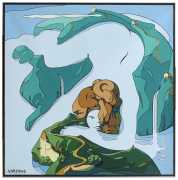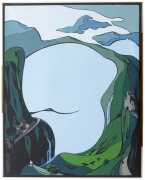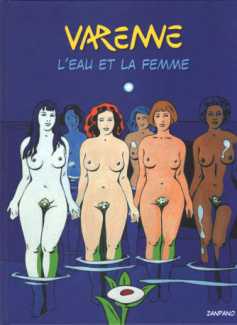 L’eau et la femme (Water and Women) was published just two years before Varenne’s death, and demonstrates how his exploration of colour and composition had developed into a highly distinctive decorative style. A few of the images are recycled from earlier work with water added, but most show a careful, thoughtful and mature consideration of the painting as a true work of art. As well as continuing the theme of reworking famous art from the past – his Mona Lisa stands out – he had also started to explore the female body as part of the natural world in his bodyscapes. It is a pity that he did not have the life left to explore these themes further.
L’eau et la femme (Water and Women) was published just two years before Varenne’s death, and demonstrates how his exploration of colour and composition had developed into a highly distinctive decorative style. A few of the images are recycled from earlier work with water added, but most show a careful, thoughtful and mature consideration of the painting as a true work of art. As well as continuing the theme of reworking famous art from the past – his Mona Lisa stands out – he had also started to explore the female body as part of the natural world in his bodyscapes. It is a pity that he did not have the life left to explore these themes further.
The pseudo-spiritual aspect of Varenne’s water-women images is extolled by Martine Charrier-Galopin, a friend of his and a practising Parisian hypnotherapist: ‘Whether a woman is dripping with desire or her bathwater, whether she emerges from primordial waters like Venus or becomes a fountain, she is sacred each time. Alex Varenne understands and demonstrates it in all the splendour of the creation of his paintings. He understands a woman, the power of her desires, the power of her communion with this mysterious, deep, secret and powerful element that is water. And he understands a man’s desire to dissolve in this water, to become one with it, finding in her arms, in the moistness and warmth of sex, re-creation, regeneration, and giving back to woman her role as sacred prostitute, the one who initiates and allows us all to rise and finally understand the ultimate goal of life – unity. That unity lasts only a moment, and must be found, again and again in the joy and simplicity of an act accomplished far from the taboos and judgments of our regimented society. Like water, Varenne’s women give themselves completely, affirm their true nature, flows into all the infinite facets of relationship with one another.’
L’eau et la femme was published by Éditions Zanpano.


